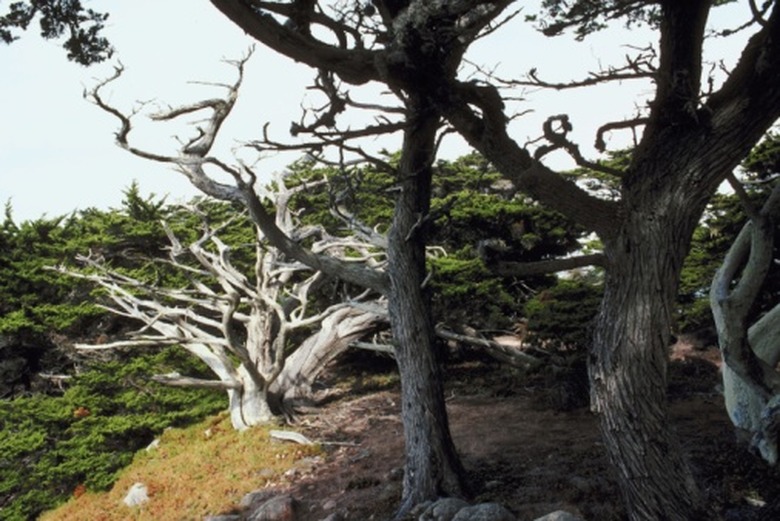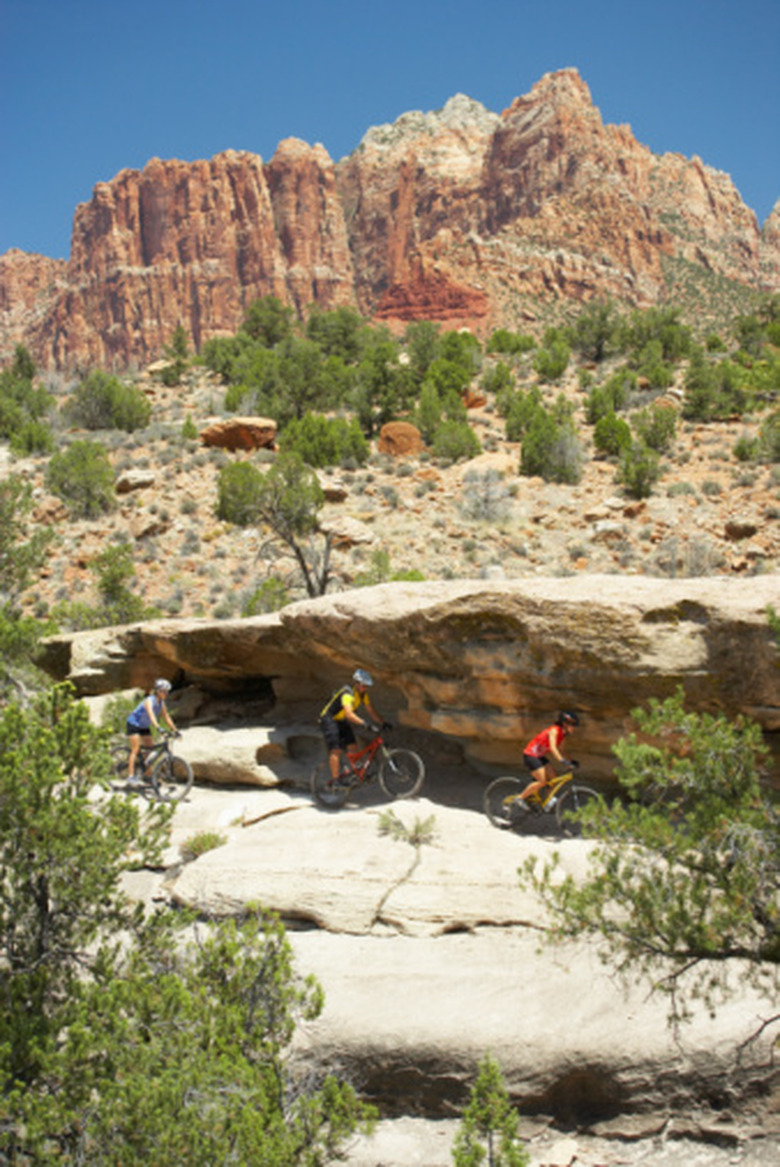Types Of Trees With Twisted Trunks
Wandering a mature forest of coast redwoods, sugar maples or bottomland cottonwoods, your main impression is often the imposing straightness of the barrel trunks. But in other species and under other conditions, trunks are very often wilder in character: ridden with boles and knobs, or veritably twisting toward the sky. Nearly any tree can grow in twisted fashion given ambient factors, while certain types usually express that growth form.
Junipers
Various kinds of junipers cover huge expanses of broken terrain as small shrub-trees. They are defining features of the lava plains of central Oregon, for example, where they form stunted woodlands in the shadow of the Cascades. Many, like the western and Utah junipers, may grow twisted, gnarled trunks, promoting a scraggly, broad-crowned appearance. Some thick-trunked veterans may be centuries old.
Hawthorns
Hawthorns, like other members of the rose family, often grow as twisted shrub-like trees. The hefty burls of old hawthorns lend their trunks an almost zigzag character. A copse or hedgerow of mature hawthorns can be a belt of darkness in otherwise open, sun-filled terrain. Not just the ropey trunks but the thorn-studded twigs give this micro-ecosystem a tangled character.
Small Maples
The often-twisted trunk of the Japanese maple is one of its salient characteristics and one of the reasons it's so sought-after in gardens and lawns. A North American relative, the vine maple, shows a similar growth form.
Pacific Madrone
This tropical-looking species ranges up the North American West Coast from California to far southwestern British Columbia, and it also grows in dry habitats of interior valleys and mountain foothills. Like the vine maple, this bigger, stouter, evergreen tree often grows beneath loftier trees like Douglas fir, ponderosa pine and Oregon white oak. In such mixed woodlands, it often manifests as a sinuous tree, its crimson, peeling trunk beautifully rippled.
Stressed Trees
Conifers and broad-leaved trees growing in the harsh conditions of high-mountain timberlines often display dramatically contorted trunks, a response to biting winds and persistent snowpacks. The same goes for trees exposed to chronic salt gusts off the ocean. The famous Monterey cypresses of California, perched on Pacific headlands, have curving trunks and ragged, flat-topped crowns.
References
- "Trees: A Visual Guide"; Tony Rodd, Jennifer Stackhouse; 2008
- "The Sibley Guide to Trees"; David A. Sibley; 2009

